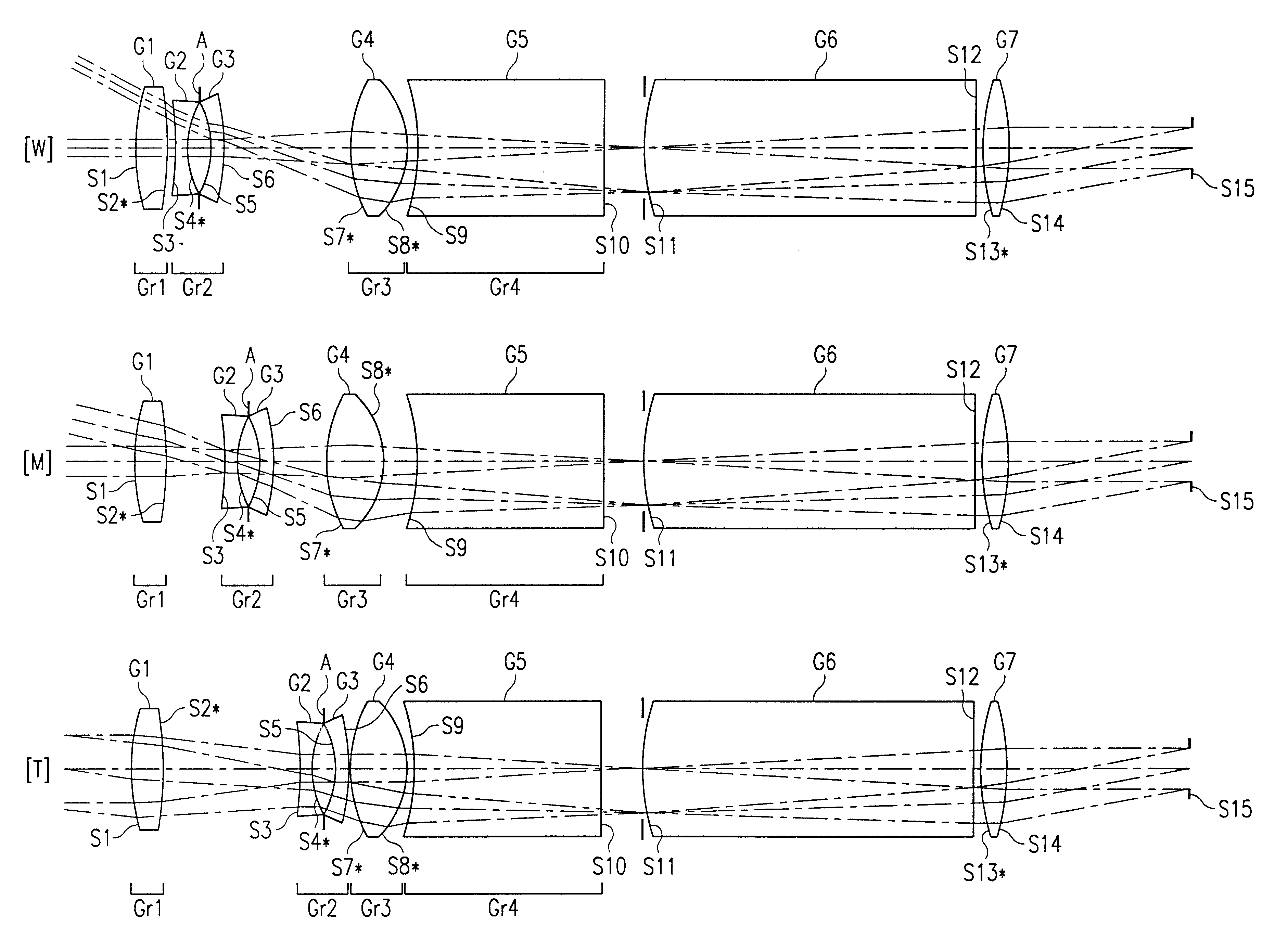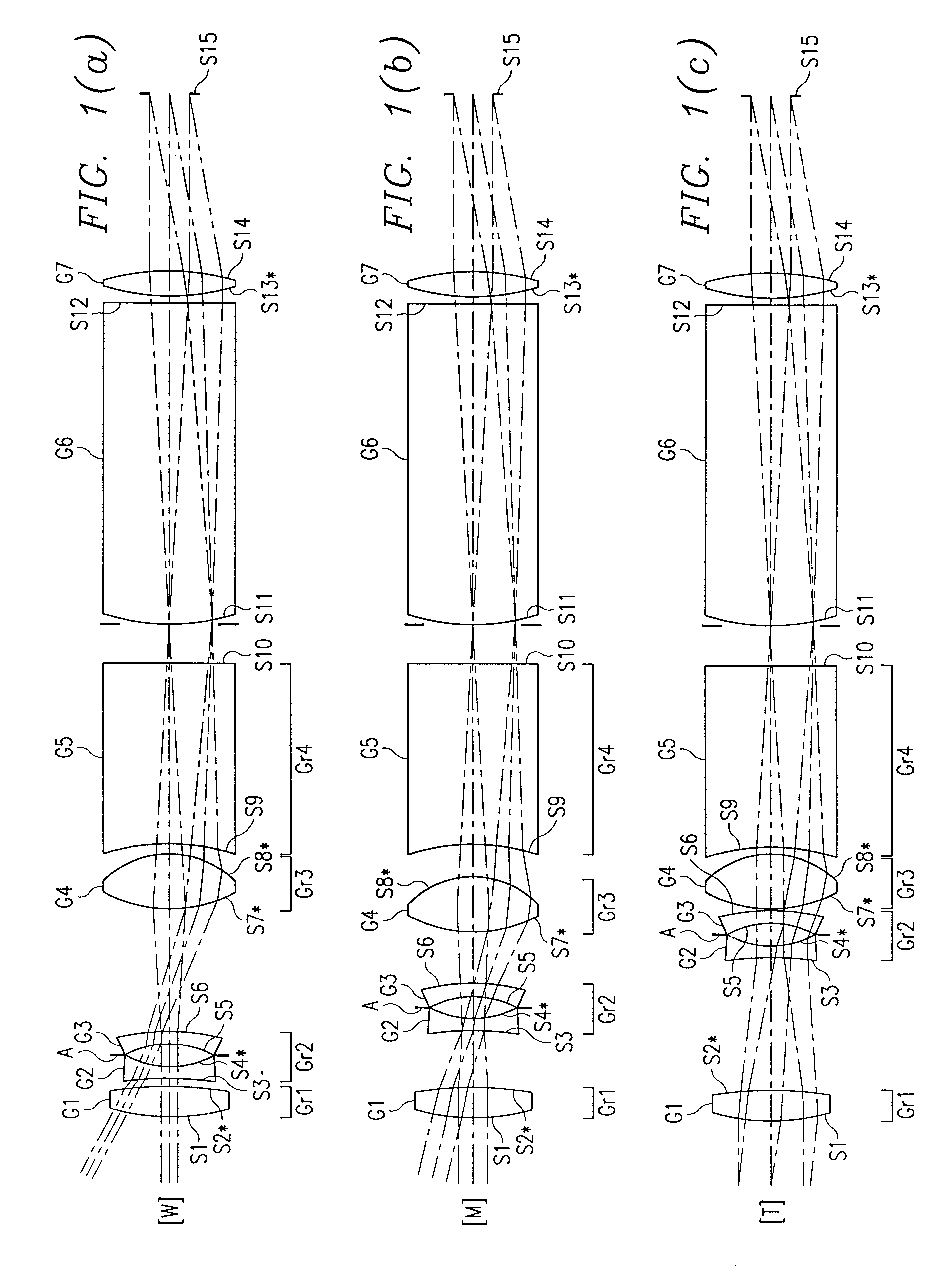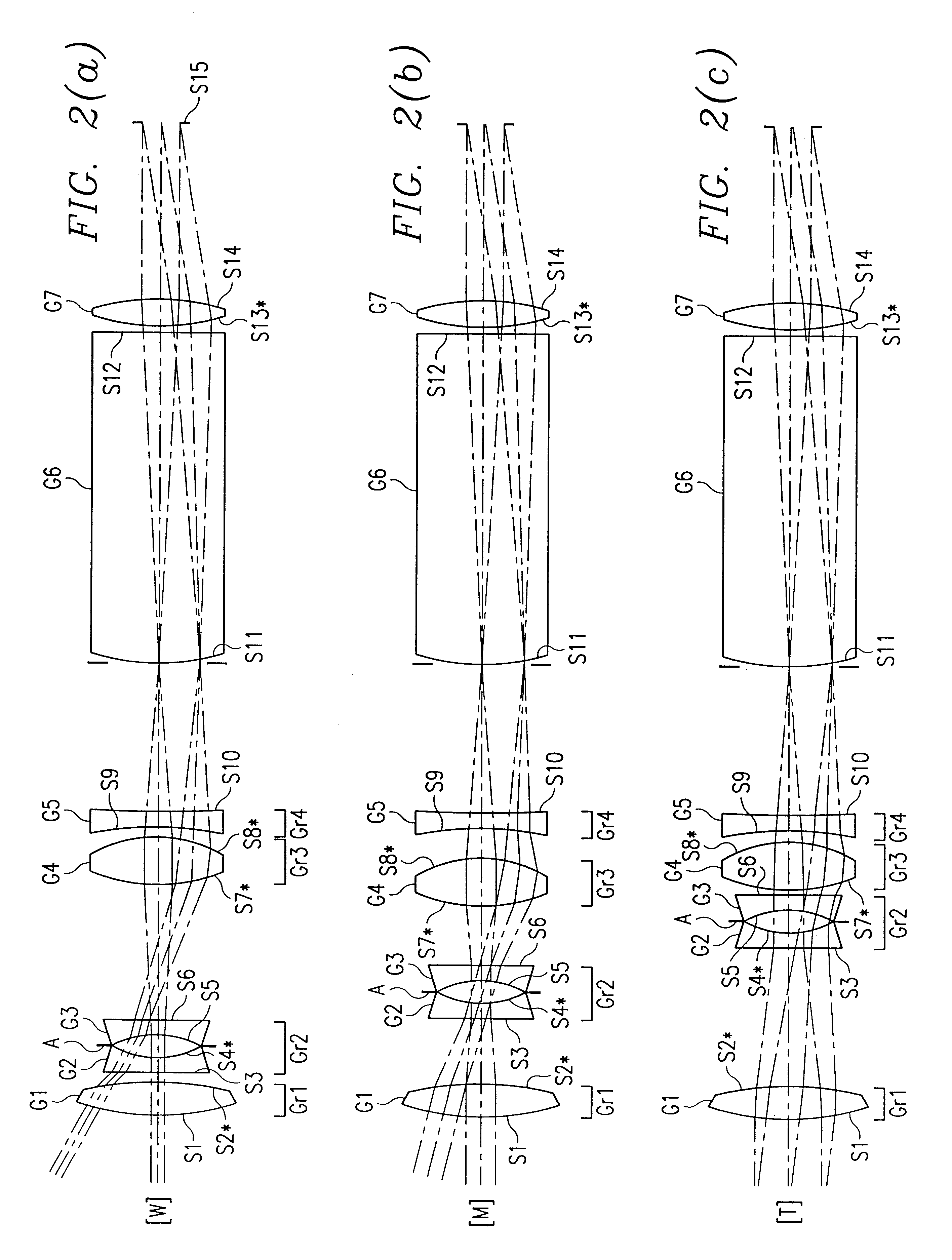Zoom optical system
- Summary
- Abstract
- Description
- Claims
- Application Information
AI Technical Summary
Benefits of technology
Problems solved by technology
Method used
Image
Examples
Embodiment Construction
OF VIEWFINDER CONSTRUCTION
Examples of the construction of the zoom viewfinder of the present invention are described hereinafter. With reference to FIG. 12, the objective optical system of this zoom viewfinder is a four lens unit zoom system comprising four zoom lens units of the positive / negative / positive / negative type. A first lens unit Gr1 comprises a single biconvex positive lens element G1. A second lens unit Gr2 comprises two biconcave negative lens elements G2 and G3 with a light shutter panel A interposed therebetween. A third lens unit Gr3 comprises a single biconvex positive lens element G4. A fourth lens unit Gr4 comprises a single biconcave negative lens element G5. The eyepiece optical system comprises a first eyepiece prism PE1 having a roof reflective surface SD, a second eyepiece prism PE2 positioned at the entrance surface a slight distance S from the exit surface of said first eyepiece prism PE1, and a biconvex positive eyepiece lens element LE. A plane mirror M1 i...
PUM
 Login to View More
Login to View More Abstract
Description
Claims
Application Information
 Login to View More
Login to View More - R&D
- Intellectual Property
- Life Sciences
- Materials
- Tech Scout
- Unparalleled Data Quality
- Higher Quality Content
- 60% Fewer Hallucinations
Browse by: Latest US Patents, China's latest patents, Technical Efficacy Thesaurus, Application Domain, Technology Topic, Popular Technical Reports.
© 2025 PatSnap. All rights reserved.Legal|Privacy policy|Modern Slavery Act Transparency Statement|Sitemap|About US| Contact US: help@patsnap.com



